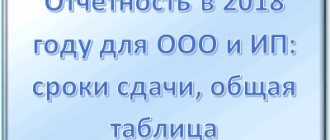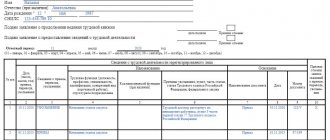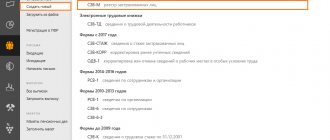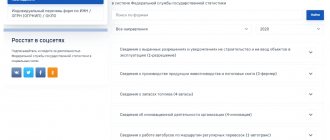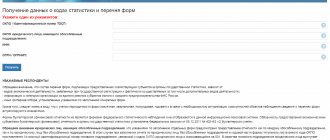What does an individual entrepreneur pay without employees? An individual entrepreneur (IP) is an individual who has passed state registration for the right to engage in business in accordance with the requirements of the law.
What does the status of an individual entrepreneur give?
First of all, it allows you to legally conduct business, which is important for obtaining a stable income. After all, punishment for violations can have irreversible consequences, starting with huge fines that will negate all previous efforts to earn money, and ending with the loss of freedom for any kind of fraud.
Secondly, sleeping peacefully and knowing that in a number of issues you are protected by your newfound status is important for preserving life and health.
In order to obtain state registration as an individual entrepreneur, a resident of the Russian Federation must have:
- Original and copy of passport.
- A copy of your birth certificate.
- Application with a notarized signature of the future entrepreneur.
- A document confirming the place of registration.
- A receipt for payment of the state fee, which in 2019 is 800 rubles.
The prepared package of documents must be submitted to the tax office. You can visit the Federal Tax Service office in person, or you can send the collected papers electronically or by mail, after having them certified by a notary. This completes your steps to register an individual entrepreneur. After reviewing the documents, and according to the law, after 5 working days, you become an individual entrepreneur. What's next?
Should you report or not?
Calculation of insurance premiums for employees is also referred to as DAM. The document became mandatory for registration starting in 2017. A corresponding chapter was added to the Tax Code, which describes accrual and payment and other important nuances.
The rules for filing reports and their execution state that these actions have become mandatory for citizens of the following categories:
- Individuals who pay remuneration to others, but do not themselves belong to.
- Individual entrepreneurs.
- Citizens with the status of legal entities.
The situation is slightly different for individual entrepreneurs who do not hire employees at all. According to the current law, all such citizens can be divided into two categories. These are those who calculate payments to employees, or those who do everything only for themselves. In the first case, we are talking about the category of policyholders, so filling out calculations becomes a mandatory requirement.
The latter will also be insured, but only for themselves. If there are no employees, there should be no calculations for insurance premiums. But there are situations when the requirement still comes into force.
Tax choice
Of course, the legality of your activities is important. However, paying taxes is another mandatory point in a businessman’s activities.
The choice of the preferred type of taxation falls on the shoulders of the individual entrepreneur.
In Russia in 2021, legislation offers five regimes:
- STS is a simplified taxation system. In this case, minimum reporting applies. An individual entrepreneur on the simplified tax system without employees hired to perform any functions is the easiest type of doing business in terms of submitting declarations and other quarterly forms to budgetary and extra-budgetary funds.
- Unified agricultural tax - unified agricultural tax. This system is only suitable for a certain type of activity. It is relevant for those businessmen who, even if they choose the reporting form of an individual entrepreneur without employees, cannot rely on the simplified tax system. However, this regime allows you to pay 6% taxes, calculated by the difference between income and expenses.
- PSN – patent taxation system. A fairly simple mode for an entrepreneur. It provides payment for a patent and the ability to work without cash register equipment.
- UTII is a single tax on imputed income. Such a system exempts the payer from value added tax, property tax, and personal income tax and allows the payer to pay 15% of the rate approved by the state. The amount imputed by law takes into account the type of activity of the businessman. It does not matter here whether the business is conducted with additional hired people or without any employees at all. For some businessmen, individual entrepreneur reporting on the simplified tax system will be more profitable than this option, since here the tax is paid even for unprofitable activities.
- OSNO - the general tax system, is a rather complex regime. It provides for the presence of an accountant on staff and includes a number of declarations submitted in accordance with reporting regulations. An individual entrepreneur on the simplified tax system without employees is easier for any businessman, since it does not oblige you to delve into the complexities of accounting and taxation.
Thus, each entrepreneur chooses the option that is suitable for him, taking into account all kinds of factors influencing his type of activity.
Where to submit the declaration?
An individual entrepreneur must submit a “simplified tax” declaration to the tax authority at his place of residence in one of the convenient ways (clause 3 of Article 80 of the Tax Code):
- in paper form (in person to the tax office, through a representative or by mail). If the declaration is sent by mail, then it must be sent by registered mail with notification and a list of attachments;
- in the form of an electronic document with mandatory signing with an enhanced qualified electronic signature. The declaration is filled out online and sent to the Federal Tax Service. No paper confirmation is needed.
Who can choose the simplified tax system and who is prohibited from doing so?
To determine for yourself the most suitable tax regime, if you do not plan to attract people to your staff, you need to understand how an individual entrepreneur reports to the simplified tax system without employees. After all, according to most experts, this category is the most profitable option. However, there are a number of conditions under which it is not possible to switch to simplification:
- Number of more than 100 employees.
- Annual income is more than 150 million rubles.
- The residual value of the property is more than 150 million rubles.
In addition, in some types of activities such a regime is also unacceptable and simplified reports are not allowed. An individual entrepreneur without employees cannot apply for the simplified tax system if he is engaged in:
- Production of excise goods.
- Activities in the banking sector.
- Minerals.
- Lawyer activity.
- Insurance.
- Providing notarial services.
- Gambling.
- Activities in the field of investments and securities.
- Microloans.
- Providing recruitment services.
- Government activities.
- Foreign operations.
No one was paid anything - is reporting on contributions necessary?
If your company does not conduct actual activities, does not have employees and does not organize work under civil law contracts (civil contracts), it does not need to pay individuals for work performed.
In such a situation, there is nothing to fill out the calculation with - the necessary data is missing. Find out how to file a zero VAT return here.
You won’t be able to completely refuse to complete the report; in this case, you will need to fill out a zero calculation for insurance premiums.
ATTENTION! From the report for 2021, fill out the report on the updated form, as amended by the order of the Federal Tax Service of Russia dated October 15, 2020 No. ED-7-11/ [email protected] .
ConsultantPlus experts explained in detail what changes have been made to the form. Get free demo access to K+ and go to the review material to find out all the details of the innovations.
Do not ignore the opinion of controllers, as this may result:
- account blocking (Article 76 of the Tax Code of the Russian Federation);
- fine 1000 rub. (Article 119 of the Tax Code of the Russian Federation).
If you were unable to avoid the fine, use the following algorithm when paying it:
- distribute its amount to the budgets of three state extra-budgetary funds;
- issue 3 payment orders;
- transfer each part of the fine to your KBK (letter of the Federal Tax Service dated 05/05/2017 No. PA-4-11/8641).
Find out more about the procedure for transferring the fine by following the link.
In the zero calculation you only need to fill out the required sheets:
- title page;
- Section 1 indicating code 2 in the “Payer Type” field - without any attachments to it;
- section 3.
Read more here.
In this case, use the following algorithm:
- Fill in the cells for sum and quantity values with zeros;
- Cross out the remaining blank spaces.
ConsultantPlus experts provided more detailed explanations on filling out the zero ERSV. Get a free online trial of K+ and follow the instructions right now.
To avoid technical difficulties with generating a calculation file and sending it via electronic communication channels, it is better to fill out the cells for the BCC.
The nuances of connecting to an electronic reporting system are discussed in the material “How to connect electronic reporting for an LLC?”.
The attractiveness of the simplified tax system for individual entrepreneurs without employees
Accounting in this case has a fairly simple form. The entrepreneur himself can handle this without involving outside specialists. In exceptional cases, you can contact a firm that advises individuals and legal entities. For a small amount they will help you draw up a declaration, and if necessary, send it electronically to the Federal Tax Service and other funds. The advantage of the simplified tax system is both the low financial burden and the ease of accounting.
The single tax allows you not to pay VAT, personal income tax and property tax. It is worth noting here that individual entrepreneurs are not exempt from payments for movable and immovable property acquired before the start of business activities and not participating in it. This means that he continues to bear the tax burden on all apartments, cars, etc. that are not used in his business.
There are two types of taxation within the simplified system. The first has the abbreviated name “STS Income”, and the second is called “STS Income minus expenses”. In both cases, namely when an individual entrepreneur uses the simplified tax system without employees, quarterly reporting is not required. This is undoubtedly another advantage of this type of taxation. Next, we will consider specific dates for generating reports and paying taxes.
Why does accounting require supporting documents?
Clause 6.3 of the instruction of the Central Bank of the Russian Federation No. 3210-U dated March 11, 2014 states that accountable persons are required to submit advance reports along with supporting documentation, but the instructions of the Central Bank do not say which check is needed for reporting to the accounting department.
Essentially, this is any financial form that confirms expenses and contains mandatory primary accounting details. Otherwise, the form cannot be accepted for accounting. The widespread transition to online cash registers has made significant changes in the procedure for conducting settlements with accountable persons. Almost all sellers of goods, works or services are required to make purchases through an online cash register. The buyer is issued a fiscal cash receipt (hereinafter referred to as FKCH) or a new type BSO. Law No. 54-FZ clearly defined which check can be accepted for an advance report, and accepting forms that do not comply with the new regulations for the use of online cash registers carries tax risks for the company.
There are only three days to report! ConsultantPlus samples and instructions will help you do this. Get free access for 2 days to use.
Deadlines for submitting declarations and making payments
Tax reporting of individual entrepreneurs on the simplified tax system without employees is ensured as follows:
- By April 30 of the year following the reporting year, you must submit a tax return for the simplified tax system for the previous year and pay the remaining amount of the tax, minus advance payments made last year.
- By the 25th day of the first month of the new quarter, it is necessary to make a quarterly advance tax payment to the Federal Tax Service.
- By the first day of the month following the reporting quarter, amounts must be paid for pension and health insurance.
It is important to know that late advance payments entail the accrual of penalties. They are determined by calculation. A figure equal to 1/300 of the current rate for each day of delay from the total amount of arrears is applied.
It should be noted that such a simple system of payments and submission of declarations is valid only in the case of entrepreneurial activity on the simplified tax system without employees. Quarterly reporting of individual entrepreneurs under such taxation is not submitted.
An entrepreneur must take into account that failure to pay the final amount for the year on time can lead not only to penalties, but also to a fine.
How to correctly fill out a zero calculation for insurance premiums
Calculation of insurance premiums is classified as a quarterly type of document. Usually we are talking about the following periods of time:
- Year.
- 9 months.
- Half year.
- 1st quarter. In this case, it is always necessary to transfer documents.
Until the 30th day of the month following the reporting period is the maximum period for which regulatory authorities must receive information. If the delivery day falls on a holiday or weekend, you can postpone the date until the next working day. It is acceptable to use paper and electronic media equally.
Reference! Information is provided during a personal visit or via email. Both options are acceptable. The responsible employee may suffer if at least part of the information is lost.
Previously, such calculations were based only on information regarding profits. Now we are talking about the income received. The main thing is not to confuse the concepts with each other. The following types of income can be classified as income, depending on the chosen tax regimes:
- The amount of profit based on the relevant document when the patent system is applied. All receipts are based on existing documentation.
- With UTII, the income previously imputed for the year is summed up. Indicators from lines 100 are added up for the last several reporting periods.
- Under the simplified tax system, the amount also includes the so-called non-operating profit. For example, when payments for rent of premises are received. Such indicators are prohibited from being reduced by the amount of costs. This also applies to cases where the appropriate regime is used. This scheme does not apply only in the case of social payments.
- For OSNO, everything that is included in standard documents is taken into account.
If there is a single founder, then he is also considered the general director. It is he who receives the salary along with other forms of remuneration. And in this case, he is listed in the compulsory insurance system. Data is still transmitted to Federal Tax Service employees, albeit in a minimal form.
Important! All lines in the document are filled in, but only one person will be the recipient of the payment.
When completing zero calculations, the following components must be filled out:
- Title page.
- The first section, where the company that pays the insurance premiums describes its data.
- Second application.
- Third section.
All lines indicate the number 0 when there are no numerical indicators.
After receiving the documents, the tax service will organize a desk audit. Explanations are requested if any errors or inaccuracies are identified. The response must be sent within a maximum of 5 working days.
If there is no response, a fine of up to 5 thousand rubles may be imposed. Repeated violations result in the fine increasing to 20 thousand rubles.
- report on your income by submitting a 3-NDFL declaration at the end of the year, and in a new form (). 3-NDFL for 2021, an individual entrepreneur must submit for OSN no later than 04/30/2020 ();
- submit a quarterly VAT return ().
In 2021, the VAT return must be submitted within the following deadlines:
Companies and entrepreneurs who have at least one individual with whom an employment contract or a civil employment agreement has been concluded are required to submit a calculation of insurance premiums for 2021 (zero), even if they did not accrue remuneration.
- during temporary suspension of activities;
- the already completed activities of the employer subject to further liquidation.
- seasonally occurring workload;
- the work of the recently registered future contribution payer has not yet actually begun;
Try it for free: Payers of mandatory insurance premiums, that is, policyholders, are companies and their separate divisions, individual entrepreneurs, heads of peasant farms:
The general tax system provides for the payment of personal income tax in the amount of 13% of the amount of income received, adjusted by the amount of confirmed expenses or by 20% of income if there is nothing to confirm expenses. Individual entrepreneurs also have the right to use other types of deductions provided for by law.
Fixed insurance premiums are paid by individual entrepreneurs in any case, regardless of the presence of activity. An entrepreneur can receive a deferment if in the reporting year he served in the army, cared for a child under 1.5 years old, an elderly person over 80 years old, or a disabled person.
If during the year the individual entrepreneur alternately hired workers, that is, after terminating the contract with one of the employees, the individual entrepreneur entered into an agreement with a new one, then in the SZV-Experience report the entrepreneur is obliged to reflect data on all employees with whom the individual entrepreneur had labor (civil) relations during a year.
Upon conclusion of the contract, Shumov acquired the obligation to maintain individual personalized records of the insured person, in connection with which Shumov submitted monthly SZV-M reports to the Pension Fund for the reporting periods of August and September in the following form:
Which simplified tax system should you prefer?
With the “STS Income” option, the tax is calculated at 6% of all financial income, including non-operating income. The amount of the advance payment, obligatory for payment after receiving the first revenue, is reflected in the declaration and in the financial report of the individual entrepreneur on the simplified tax system 6. An entrepreneur carries out his activities without employees or having full-time employees, he still has several advantages. If you have hired personnel, you can reduce your tax payment by the amount of transferred insurance premiums, payments for temporary disability and voluntary insurance. If there are no personnel, then contributions for oneself to the Pension Fund and the Federal Compulsory Medical Insurance Fund can reduce the tax.
Among the disadvantages of this option, it is worth noting that large expenses can result in losses.
When choosing “STS Income minus expenses”, the tax rate is 15% and is calculated based on the difference between revenue and expenses. It should be noted here that not all expenses can be included when determining the basis. They must be designated in Article 346.16 of the Tax Code and are necessary for the activities of the entrepreneur. The costs of such expenses should be confirmed by primary documents, they must take place in real activities, that is, the individual entrepreneur can present invoices, certificates of work performed and services provided. With such a system, there is no risk of going into the red.
A special feature is the mandatory control of the total amount of tax paid for the year. If it is less than 0.01 part of the total income, then you should pay additional tax up to 1%.
The disadvantage in this case is the fact that not all costs can be confirmed by two types of documents, some of which state payment, and others indicate receipt of goods or services. In this situation, these amounts cannot be included in expenses.
Required documents
The declaration is the most important document. The Russian Ministry of Finance requires reporting on income received from business activities by April following the reporting year. The declaration consists of two parts, so we will dwell in detail on filling out each.
The first part contains the details of the entrepreneur himself. These include, again, the identification code number. In case of corrections made to previously submitted data, the serial number of the declaration is indicated. If there are no corrections, then simply put the number 0 in the corresponding column. It is necessary to indicate for which year the document is being submitted, the inspection code, full name and type of activity undertaken, determined by the class specified in the documents previously issued to it. You must fill it out carefully so as not to make mistakes. Reporting is accepted only in its pure form, without corrections or erasures, so that all data can be easily read.
The second section is devoted to the object that is subject to tax. There is a division, which is indicated in the document by numbers 1 and 2, that is, if income or income-expenses are registered, this must be noted.
The OKATO code must be entered. In essence, this is a number that indicates the entrepreneur’s affiliation with a specific administrative location. The decoding is simple - an all-Russian classifier of administrative territorial objects. In Russia, every settlement, regardless of size, is included in this classification.
The rule was introduced after the formation and entry into the country of sovereign entities and republics. Designed for the convenience of determining which subject a particular city belongs to. The system is designated by numbers from 8 to 11.
It is also mandatory for an individual entrepreneur located on the simplified tax system to enter the BCC. This is a code designed to account for expenses and income for all budgets in the country. The code structure is 20-digit; you can view it on the tax inspectorate websites.
Next, you need to indicate the income received, for which there are three lines that indicate the figures of calculated taxes:
- line 030 – indicating the tax for the quarter;
- line 040 – for half a year, that is, the sum of the addition of the first and second quarters;
- line 050 – for 9 months, the sum of the addition for three consecutive quarters.
You also need to fill out line number 060, where you need to indicate the difference between the tax accrued for the year, the taxes actually paid and the line in which the tax was calculated for 9 months. You can leave it blank only if the resulting value has a minus sign.
In line 210 you need to indicate the amount of total annual income. If the simplified tax system takes into account only income, there is no need to fill out lines 220 and 230. Line 280 contains the amounts that are used to pay insurance premiums. But if an individual entrepreneur works under the simplified tax system and has no employees, then the tax amount can be reduced by this amount.
Having double-checked the correctness of the entered data, signed and dated, you can submit the document. This will be the annual declaration. In the case where no business activity was carried out and no income was received, a zero tax return is submitted.
How to calculate advance payments
The tax period is recognized as a full calendar year in the case of carrying out activities and submitting reports of an individual entrepreneur to the simplified tax system without employees. The example presented below will help to better understand this taxation system from the inside.
If you have your first income, for example, in February, which amounted to 10 thousand rubles, then by April 25 you must pay an advance in the amount of 6%, that is, 600 rubles under the “STS Income”. Let's assume that in April, May and June you earned another thirty thousand rubles. Then, until July 25, you must pay another 1,800 rubles. In the next 3 months, your income also amounted to 30 thousand rubles and the advance payment made before October 25 should be equal to 1800 rubles. Let's imagine that over the last period of the year you earned another 20 thousand. Now, before April 30, you submit a declaration for an amount of income equal to 90 thousand rubles, and pay an additional amount to get 6% of the entire income.
Thus, the final annual tax amount is calculated using the formula:
90000/100*6 = 5400 rubles.
However, you have already made advance payments in the amount of:
600 + 1800 + 1800 = 4200 rubles.
This means you have to pay extra:
5400 – 4200 = 1200 rubles.
This calculation applies when a system is selected for reporting individual entrepreneurs without employees, the simplified tax system is 6%, that is, only income is taken into account.
If you chose the “STS Income minus expenses”, then according to tax legislation, 15% is paid. Let's give a specific example.
In the first quarter, the businessman earned 30 thousand rubles, and spent 25 thousand on business activities. Then the advance payment is calculated as follows:
(30,000 – 25,000)/100*15 = 750 rubles must be paid by April 25.
The difference between income and expenses in the second and third quarters was 15 and 20 thousand rubles.
This means that until July 25 we pay an advance in the amount of: 15000/100*15 = 2250 rubles.
Until October 25, we transfer the amount: 20,000/100*15 = 3,000 rubles.
For the year, we will have to pay an additional amount based on the difference in income and expenses for the fourth quarter. If it was 5 thousand rubles, then we transfer tax in the amount of another 750 rubles.
What should a simplified individual entrepreneur pay?
Income from entrepreneurial activities of individual entrepreneurs is subject to a single tax. When receiving other income (for example, from the sale of real estate), he is obliged, like any individual, to pay personal income tax (clause 3 of Article 346.11 of the Tax Code).
Working without hiring individuals , the entrepreneur is additionally obliged to pay insurance premiums only for himself for:
- compulsory pension;
- health insurance.
The use of the labor of hired citizens entails the obligation to pay:
- insurance premiums;
- Personal income tax on their wages.
They are calculated in accordance with the generally established procedure.
As an ordinary individual, an entrepreneur also pays the following taxes::
- transport;
- land;
- property (for residential real estate).
Real estate that is used for business activities is subject to exemption from property tax, with the exception of objects for which the tax is calculated using the cadastral value (clause 3 of Article 346.11 of the Tax Code).
Tax rates for the simplified tax system and example of calculation
The tax rate for the simplified tax system in 2021 has not changed and is:
- for the “Income” object, that is, all income received is considered - 6%;
- for the object “Revenue minus expenses”, that is, net profit - 15%.
For example , entrepreneur K. in 2021 worked under a “simplified” system with only income taxed. His total income for the year amounted to 3 million rubles. Applying a rate of 6%, we get a tax amount of 180 thousand rubles.
If the object of taxation were “income minus expenses”, then when calculating the tax, its expenses in the amount of 1 million rubles were taken into account, but the rate would already be 15%:
(3,000,000 – 1,000,000) × 15% = 300 thousand rubles.
The video shows, using a personal example, how to calculate and pay tax on the simplified tax system on income of 6% for individual entrepreneurs without employees in 2020.
In a number of regions, for a limited list of business activities, these marginal rates can be reduced on the basis of the Laws of the constituent entities of the Russian Federation.
Thus, the following rates under the simplified tax system have been approved:
- In Moscow, the simplified tax system “income minus expenses” tax rate is 10% until December 31, 2020. A 0% rate applies to new individual entrepreneurs and those who have switched to the simplified tax system from another tax system. But the conditions must be met: it corresponds to a certain type of activity and the number of workers is no more than 15 people (Moscow Law of October 7, 2009 No. 41).
- For the Republic of Crimea, after joining the Russian Federation, a rate was established for individual entrepreneurs working on the simplified tax system, taking into account only income of 4% and taking into account a reduction in expenses of 10%;
In regions where the authorities apply tax holidays for newly registered individual entrepreneurs, the tax rate under the simplified tax system is 0%, subject to certain conditions.
For example, according to the law of the Sverdlovsk region dated June 15, 2009 No. 31-OZ, no tax is taken from those individual entrepreneurs who are registered for the first time and carry out repairs and installation of machinery and equipment, as well as production activities:
- clothes;
- food products;
- furniture;
- finished metal products, except equipment and machinery.
- etc.
All information about the regional rules for applying the simplified tax system can be found on the official website of the Federal Tax Service - nalog.ru.
Insurance premiums for health and pension insurance
For entrepreneurs, the amount of fixed contributions for compulsory pension and health insurance is established annually. This takes into account the amount of income received during the year. If the amount does not exceed 300 thousand rubles, then the individual entrepreneur pays only a fixed payment.
When using the labor of hired workers, insurance premiums will need to be paid from wages in the same manner as for legal entities.
How much are the total “self-employment” contributions paid in 2020?
An entrepreneur using the simplified tax system only for himself in 2021 needs to pay mandatory contributions to extra-budgetary funds:
- for state pension insurance (SPI) - 29,354 rubles + 1% on the amount exceeding income of 300 thousand rubles, but not more than 234,832 rubles in total;
- for health insurance (FFOMS) - 8,426 rubles , regardless of income received.
As a result, the total amount is 37,780 rubles.
More details about increasing the amount by 1%. If the entrepreneur’s annual income is more than 300 thousand rubles, then in addition to the fixed payment, an additional contribution to pension insurance in the amount of 1% should be calculated and paid from the amount exceeding the income of more than 300 thousand rubles.
For example: from an income of 450,000 rubles. It is necessary to additionally enter into the OPS:
(450,000 - 300,000) × 1% = 1,500 rubles.
It should be taken into account that the additional contribution is limited to a maximum limit of eight times. Therefore, for an OPS, the total insurance premium cannot exceed:
29,354 × 8 = 234,832 rubles.
Important ! Every entrepreneur is required to pay contributions for himself, regardless of whether he receives income from his activities or not. Insurance premiums are paid throughout the entire period until the individual entrepreneur is deregistered.
The amount of the fixed payment is calculated in proportion to the period in which the entrepreneur is registered as an individual entrepreneur. This means that when registering or deregistering during a calendar period, he must make a calculation and pay the payment amount for the number of months and days he was an individual entrepreneur.
For example, consider a situation where a citizen registered as an individual entrepreneur with the tax authority on October 25, 2021. Contributions should be calculated for 2 months and 7 days:
- (29,354 + 8426) / 12 × 2 = 6296.67 rubles. in 2 months;
- ((29,354 + 8426) / 12) / 31 × 7 = 710.91 rub. in 7 days.
Total payable for 2021: 5397.60 + 609.40 = 7007.58 rubles.
For a quick calculation, use the fixed premium calculator.
Step-by-step instruction
So, you must understand that there is absolutely no need to keep full accounting records for an entrepreneur. There is no need to submit financial statements in the full sense of the word.
We offer you seven steps to a successful business.
Step 1. Calculate expected expenses and income.
Step 2. Select the appropriate tax regime.
Step 3. Find out what reporting forms need to be submitted to the Federal Tax Service under your tax payment system.
Step 4. If you are going to keep a record book. individual entrepreneur reporting on the simplified tax system without employees, then there is no need for this step. If you decide that you need hired workers, know that you need to submit reports on personnel composition to the Pension Fund, Social Insurance Fund, Federal Tax Service, and territorial statistics office.
Step 5: Take the time to study the tax calendar, as missing filing deadlines can result in hefty penalties.
Step 6. Decide whether you can do simplified accounting yourself or whether you should invite someone from the outside.
Be sure to save all documentation related to the business, such as contracts, bank statements, source documents.
Issuance of accountable amounts in 1C 8.3 Accounting step by step.
The basis for issuing an advance may be an order or instruction from the head of the Organization, or an application from an employee. Since 2018, writing an application from an employee is not mandatory. The application is written in any form, indicating the amount and what the funds are needed for. In this case, the next step will be the signing of this document by the Director of the Organization.
Issuing an advance amount through the cash desk in the 1C 8.3 Accounting program.
We create an expense cash order in the 1C 8.3 Accounting program: 1. Sequentially open the tabs: “Bank and cash desk” - “Cash desk” – “Cash documents” – “Cash withdrawal (creation)”
2. We indicate (fill out the document):
2.1 Type of transaction: “issuance to an accountable person.”
2.2 The number and date are assigned automatically by the program.
2.3 Recipient: select from the list of employees.
2.4 Amount: indicate the required amount, starting from the basis (order or application).
2.5 Cash flow item: “issuance of accountable amounts.”
2.6 Comment: it is convenient to indicate what served as the basis for issuing an advance, for example, “order No. 124A dated July 11, 2019” or “application from an employee dated July 11, 2019.”
2.7 Account: “50.01” (automatic)
2.8 Organization: select and list if the program maintains reports on several enterprises. If there is only one Organization, it will be automatically selected.
2.9 Open the “Details of the printed form” - fill out the “ground”: write the number and date of the order from the director or the date of the application from the employee.
3. Next, click “conduct”.
4. Check the wiring generated by the program. To do this, press the “Dt/Kt” button. Postings: debit 71.01, credit 50.01.
Check: if we open the balance sheet for 71 accounts, we will see that the employee has an advance amount.
5. Go to the newly created cash receipt order and send it for printing (icon with a picture of a printer).
6. Sign the accountable person, accountant and manager.
7. The next step is to issue money to the employee.
Transfer of funds in the 1C 8.3 Accounting program from the Organization’s account to the employee’s personal account.
We create a document in 1C Accounting 8.3, issuing funds by transferring non-cash funds to the employee’s personal account.
1. Sequentially open the tabs: “Bank and cash desk” - “Bank” - “Bank statements” - “Debit from current account (creation)”. We create a new document (payment order).
2. We indicate:
2.1 Type of transaction: “transfer to an accountable person”
2.2 The date and document number are assigned automatically.
2.3 Recipient: select from the list of employees.
2.4 Amount: we deposit the required amount specified in the basis for issuing the advance.
2.5 Purpose of payment: “issuance of funds on account for the purchase of office supplies based on order No. 1020A dated July 11, 2019.”
3. Write down the document and close.
4. Next, you will need to upload a file to send to the bank, or generate a payment order directly in the online bank (in organizations, communication with the bank is configured differently).
5. After a bank statement is received from the bank with the actual debit from the Organization’s current account, the accountant posts it in the program and again goes into the document created when transferring funds, ticks “confirmed by bank statement” and attaches the payment order. Post the document.
6. The program generates transactions: debit 71.01, credit 51.
Accounting
In addition to paying taxes and filing a return, an entrepreneur is recommended to maintain simplified accounting. For individual entrepreneurs without employees, the simplified tax system means filling out a book of income and expenses (KUDiR). A businessman or his accountant must enter absolutely all income and expenses into it, which should additionally be supported by documents.
Such a book is started for one year and stored for another four after the end of the reporting period. KUDiR is stitched, numbered, certified by signature and seal. The book is not submitted to the tax office, but the inspector has the right to demand it for inspection. In this case, it must be provided within ten days, otherwise the entrepreneur will face a fine. If the tax office identifies at least two records for which there are no supporting documents, then the individual entrepreneur will also face sanctions.
KUDiR includes five sections:
- Income and expenses.
- Amounts for the purchase of fixed assets.
- Expenses on the basis of which the amount of taxes is reduced.
- Determination of the amount of loss.
- Amounts that are taken into account when calculating the tax base in rubles.
A businessman must decide whether he will hire an accountant, contact an outsourcing company, or keep individual entrepreneurs’ accounts without employees using the “USN Income” or “USN Income minus expenses.”
What documents cannot confirm expenses?
Representatives of the Ministry of Finance and the Federal Tax Service have repeatedly pointed out to accountants which checks cannot be accepted for advance reports:
- the document has faded, the details are unreadable;
- The FCC does not contain any mandatory details;
- the contents of the payment transaction do not correspond to the sub-report, for example, payment for a hotel room does not coincide with the dates of the business trip;
- the document is damaged, some of the required details are lost.
IMPORTANT!
If supporting documents for the advance report are drawn up in violation of the legislation of the Russian Federation, then expenses on them are not taken into account for tax purposes, since they do not have proper documentary evidence (letters of the Ministry of Finance No. 03-03-06/2/94579 dated 12/05/2019, No. 03- 03-06/1/3300 dated 01/22/2020, No. 03-03-06/3/4915, No. 03-03-06/1/4913 dated 01/28/2020).


